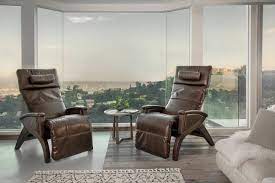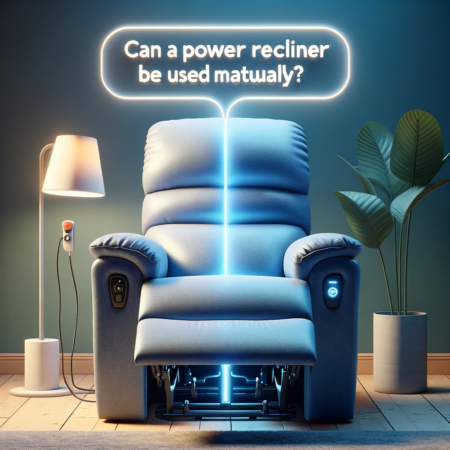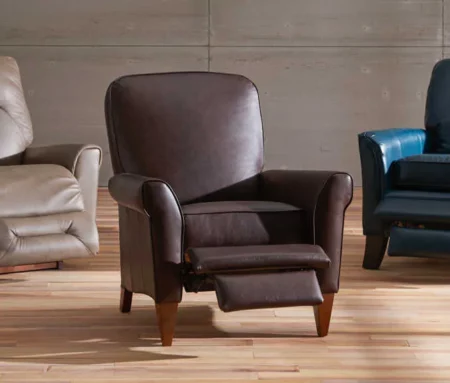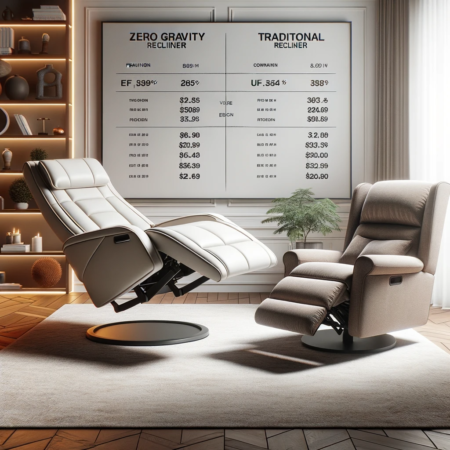To hide power recliner cords, there are a few simple solutions you can try. First, you can use adhesive cord clips or cable management sleeves.
These can be easily attached to the back or sides of your recliner, allowing you to secure the cords and keep them out of sight.
You can then route the cords along the legs or base of the recliner and secure them using the clips or sleeves.
This helps to maintain a clean and organized look.
In this comprehensive guide, we will explore eight more proven methods to hide those cords and enhance the visual appeal of your space.
Why Hide Power Recliner Cords? 8 Proven Methods
Before we delve into the methods of hiding power recliner cords, it’s important to understand why it’s necessary.
The cords that connect your power recliner to an electrical outlet can be unattractive, especially when they are visible and disrupt the overall aesthetic of your room.
By hiding these cords, you can create a cleaner and more organized look.
This allows your power recliner to blend seamlessly with the rest of your furniture and decor.
8 Proven Methods for Hiding Power Recliner Cords
1. Move Furniture Closer to the Wall
One simple yet effective method for hiding power recliner cords is to move your furniture closer to the wall.
By positioning your power recliner against the wall, you can create a gap between the recliner and the outlet, making it easier to conceal the cords.
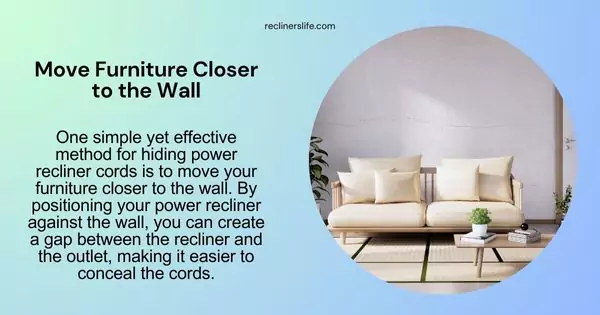
However, it’s important to note that this method may not be suitable for all room configurations.
Pros:
- Easy to implement
- Doesn’t require additional materials
- Can work well if your power recliner is already positioned close to the wall
Cons:
- May not be feasible in rooms with limited space or unconventional layouts
- Cords may still be partially visible depending on the placement of the outlet
2. Install Cord Covers
Cord covers are a popular choice when it comes to hiding power recliner cords.
These covers are designed to enclose and camouflage the cords, providing a clean and streamlined appearance.
There are various types of cord covers available, including flexible fabric covers, plastic channels, and adhesive-backed covers.
Different Types of Cord Covers
- Flexible Fabric Covers: These covers resemble a sleeve or tubing and can be easily wrapped around the cords.
- Plastic Channels: These covers consist of a rigid plastic channel that can be attached to the wall, providing a designated space for the cords.
- Adhesive-backed Covers: These covers have adhesive on one side, allowing you to stick them directly onto the wall or baseboard.
How to Install a Cord Cover
- Measure the length of the cords you want to cover.
- Cut the cord cover to the appropriate length.
- Open the cover and insert the cords.
- Close the cover and secure it to the wall or baseboard using adhesive, screws, or clips, depending on the type of cord cover.
3. Use Wall Plates
Wall plates are another effective solution for hiding power recliner cords. These plates are designed to conceal outlets and provide a neat and organized appearance.
Wall plates typically come in various styles and finishes to match your room’s decor.
Different Types of Wall Plates
- Recessed Wall Plates: These plates are designed to sit flush with the wall, allowing the cords to be hidden behind them.
- Hinged Wall Plates: These plates have a hinged cover that can be opened and closed to access the outlets.
- Brush Wall Plates: These plates have bristles that create a barrier between the cords and the wall, concealing them effectively.
How To Install a Wall Plate
- Turn off the power to the outlet.
- Remove the existing outlet cover.
- Align the wall plate with the outlet and secure it using the provided screws.
- Connect the cords to the outlet and close the wall plate.
4. Employ Cord Baskets
Cord baskets offer a practical and visually pleasing solution for hiding power recliner cords.
These baskets are designed to hold and conceal the cords, providing a clean and organized look.
Cord baskets typically come in different sizes and styles to accommodate various cord lengths and thicknesses.
Different Types of Cord Baskets
- Wall-mounted Cord Baskets: These baskets can be attached to the wall near the outlet, allowing you to neatly tuck the cords inside.
- Floor Cord Baskets: These baskets rest on the floor and provide a designated space to hide and organize the cords.
How To Use a Cord Basket:
- Measure the length of the cords you want to hide.
- Choose a cord basket that can accommodate the cords.
- Place the cords inside the basket, ensuring they are neatly arranged.
- Attach the basket to the wall or position it on the floor, depending on the type of cord basket.
5. Cover Cords with Tape
If you’re looking for a quick and temporary solution, covering cords with tape can be a viable option.
Although not as aesthetically pleasing as other methods, it can help reduce the visibility of the cords and create a neater appearance.
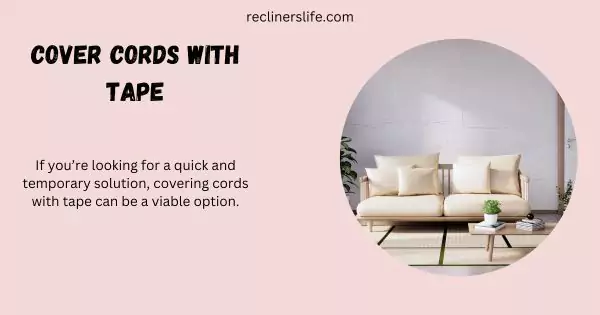
Electrical tape or cord concealer tape is commonly used for this purpose.
Pros:
- Quick and easy to implement.
- A temporary solution that can be easily removed.
- Cost-effective method.
Cons:
- Not as visually appealing as other methods.
- May leave residue on the cords or walls when removed.
6. Hide Cords in Tubes
Cord tubes provide a practical and efficient way to hide power recliner cords. These tubes are designed to enclose and protect the cords while keeping them hidden from view.
Cord tubes come in various sizes and materials, such as plastic or fabric, to accommodate different cord thicknesses.
Different Types of Cord Tubes
- Flexible Plastic Cord Tubes: These tubes can be bent and shaped to fit the cords and can be easily cut to the desired length.
- Fabric Cord Tubes: These tubes resemble fabric sleeves and can be wrapped around the cords, providing a more decorative option.
How to Hide Cords In a Tube
- Measure the length of the cords you want to hide.
- Choose a cord tube that can accommodate the cords.
- Insert the cords into the tube, ensuring they are neatly arranged.
- Position the tube along the wall or baseboard, securing it with adhesive or clips, if necessary.
7. Use Cord Cloaks
Cord cloaks offer a unique and stylish way to hide power recliner cords.
These decorative covers are designed to wrap around the cords, transforming them into an attractive element of your room’s decor.
Cord cloaks typically come in various materials, patterns, and colors, allowing you to find one that matches your style.
Pros:
- Adds a decorative element to the cords.
- Conceals the cords effectively.
- Easy to install and remove.
Cons:
- May be more expensive than other methods.
- Limited availability of styles and designs.
8. Place Power Strips in Boxes or Drawers
If you have multiple cords to hide, placing power strips in boxes or drawers can be a practical solution.
This method allows you to gather and conceal the cords in one central location, reducing clutter and creating a clean and organized look.
Choose boxes or drawers that are large enough to accommodate the power strip and cords.
Pros:
- Provides a centralized location for hiding multiple cords.
- Reduces clutter and maintains a neat appearance.
- Can be easily accessed when needed.
Cons:
- Requires additional space for boxes or drawers.
- May limit access to power strips for maintenance or adjustments.
Tips for Hiding Power Recliner Cords
Here are some additional tips to consider when hiding power recliner cords:
- Use cord clips or cable ties to keep the cords neatly organized and prevent them from tangling.
- Consider using cord management systems or cable raceways for a more professional and streamlined look.
- Paint cord covers or wall plates to match the color of your walls for a seamless blend.
- Utilize furniture or decorative items strategically to hide or divert attention from the cords.
- Measure the length of the cords before purchasing any cord management products to ensure a proper fit.
Conclusion
By employing the methods outlined in this comprehensive guide, you can effectively hide power recliner cords and enhance the overall aesthetics of your living space.
Whether you choose to move furniture closer to the wall, install cord covers or wall plates, employ cord baskets or cloaks, or use other creative solutions, you can achieve a clean and organized look while keeping the functionality of your power recliner intact.
Experiment with different methods to find the one that suits your preferences and complements your room’s decor.
Frequently Asked Questions
Can I plug a power recliner into an extension cord?
It is generally not recommended. Power recliners often require a significant amount of power, and using an extension cord can increase the risk of electrical hazards or damage to the recliner. It’s best to plug your power recliner directly into a properly grounded electrical outlet.
Do power recliners use a lot of electricity?
Power recliners typically consume a moderate amount of electricity, especially when in use. It’s advisable to refer to the recliner’s specifications or consult the manufacturer for more specific information on energy usage.
Do power recliners have to be plugged into an outlet?
Yes, power recliners need to be plugged into an electrical outlet to function. The power cord of the recliner connects to the outlet, supplying the necessary power for the reclining and motorized features.
How do you hide a charging cord?
To hide a charging cord, you can utilize similar methods discussed for power recliner cords. Options such as cord covers, cord baskets, cord tubes, or using furniture strategically can effectively hide charging cords and maintain a tidy appearance.
